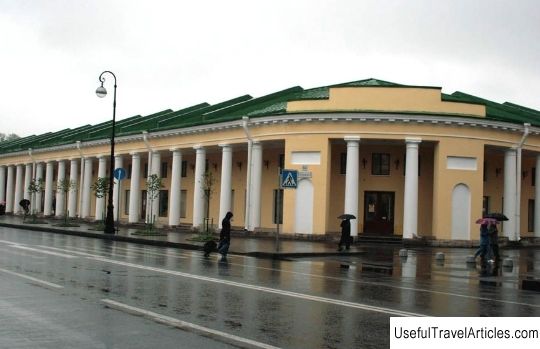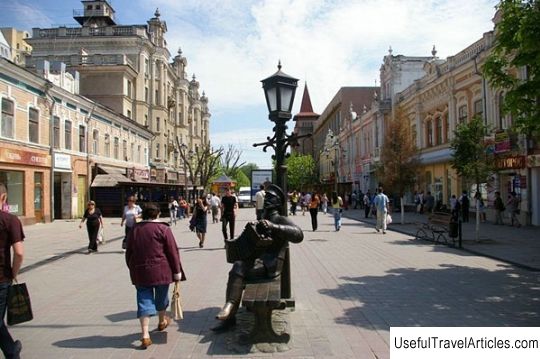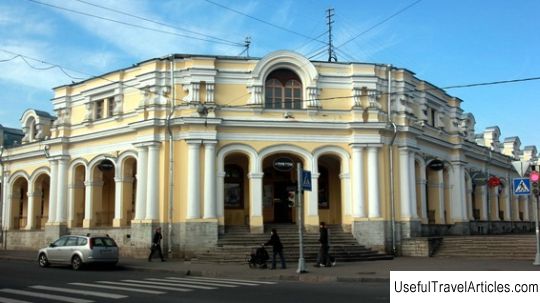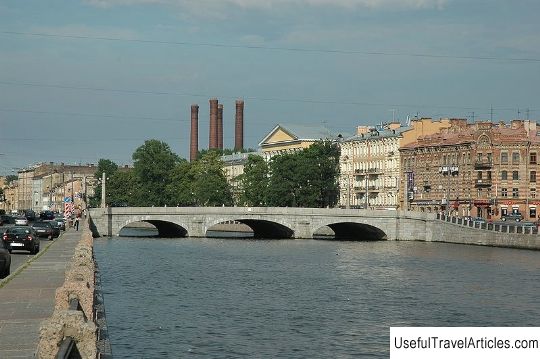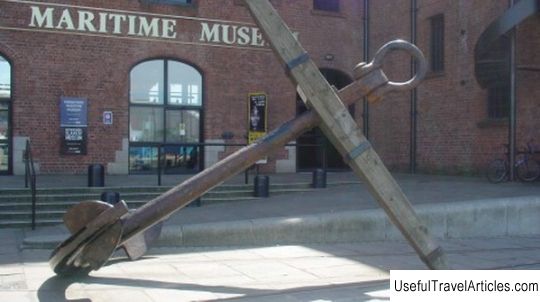Nevsky Prospekt description and photo - Russia - Saint Petersburg: Saint Petersburg
Rating: 9,4/10 (1930 votes) 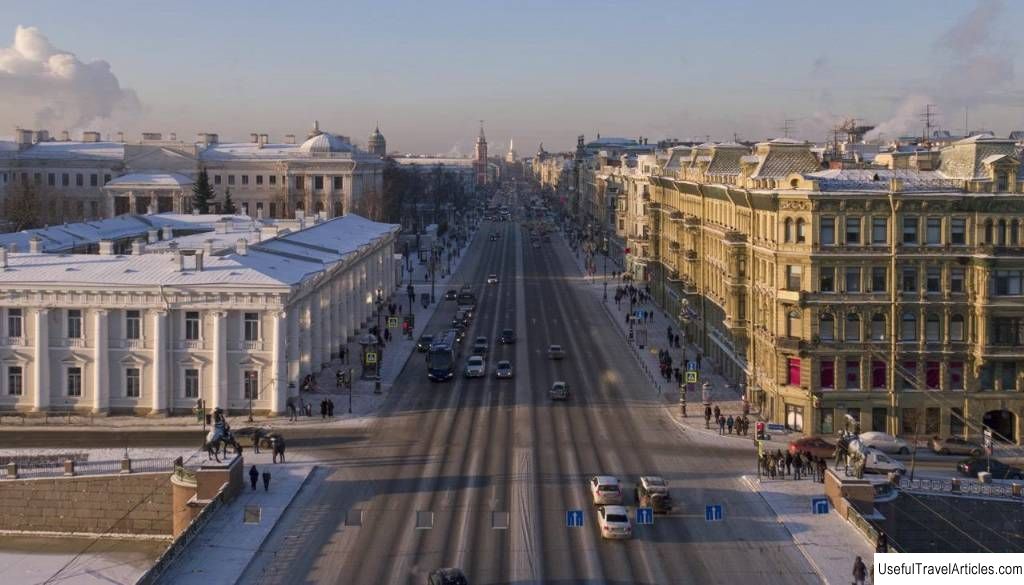
Nevsky prospect description and photos - Russia - St. Petersburg: St. Petersburg. Detailed information about the attraction. Description, photos and a map showing the nearest significant objects. Photo and descriptionWhile visiting the sights of the cultural capital of Russia, it is impossible to pass by the main street of the city, on which there are many monuments of history and architecture; and it is itself a famous landmark. Nevsky Prospekt is crossed by two rivers and one canal; the facades of two hundred and forty buildings overlook this street, and many of these buildings are old, with a rich history. The length of the avenue is about four and a half kilometers. The smallest street width is twenty-five meters (near the Green Bridge). Near Gostiny Dvor the width of the avenue is about sixty meters - this is the widest part of the street. Nevsky Prospekt in the 18th centuryFirst of all, a few words should be said about the name of the street. The avenue is called Nevsky because it leads to the Alexander Nevsky Lavra . However, for a long time this street (more precisely, the usual road, which it once was) had no official name at all, and there were many unofficial ones. For example, in the mid-30s of the 18th century, it was simply called The Great Road . Later, the official names appeared, there were also several of them. So, for some time it was Neva perspective . The name by which the street is widely known today appeared in the mid-70s of the 18th century. In Soviet times, an attempt was made to rename the street, but in the end it was returned to its former name. So, how did the history of the famous avenue begin? The beginning of its history can be considered the construction on the Neva bank of the city fortress-shipyard . It was built in the early years of the 18th century. After a while, a monastery was built at a fairly large distance from it, but also within the city limits. Soon there was a need to pave a path that would connect these two objects with a wide road leading inland. Of course, it was not about the construction of that comfortable street that adorns the city today. The path that was planned to be laid, was, in fact, a clearing in the forest . Its construction was associated with a lot of difficulties: it was necessary to make a road not only through the forest, but also through the swampy terrain. Many drainage ditches were built to drain the soil. In some areas, the builders had to deal not even with a swampy forest, but with a continuous chain of swamps . But in the end, the goal was achieved: the first part of the clearing, originating from the shipyard, was laid. A little later, the construction of a road from the monastery to the Novgorod tract (the one that led inland) began. The builders again had to work in the incredibly difficult conditions of the wetland. The method of dealing with swamp swamps was quite simple: felling trees, uprooting stumps, digging ditches, laying fascines. This is how the history of the famous avenue began. It appeared approximately in the 10s of the 18th century . During the period of time when the road was not yet completed, houses of immigrant craftsmen appeared nearby. who together with their families came to the city under construction from different parts of the country. Their houses were separated from the road by a fairly wide strip of forest. It was strictly forbidden to cut down trees in it. To prevent illegal logging, the following measures were taken: searches were carried out in the houses of the artisans and, if felled trunks were found, the owner of the house was subjected to severe corporal punishment. In the 20s of the 18th century, a luxurious palace . It was erected for Catherine I . A huge garden was laid out under him. wooden bridges were built across small rivers that crossed the road in two places. After that, it became one of the favorite streets of the townspeople. Work was carried out to improve it: rows of trees were planted on both sides, the crowns of which were regularly shaped. The street was paved with stones . In the early 20s of the 18th century, even several oil lanterns appeared here: this was the first place in the country where street lighting began to be used. Benches were placed under the lanterns. Of course, now the avenue no longer resembled that forest clearing, which it was at the very beginning of its history. According to the memoirs of one of the foreigners who visited the northern Russian capital at that time, the avenue was very long, stretching where beyond the horizon. Also, the guest of the city noted the incredible beauty of the street (although the trees planted on its sides were still low). He also writes about the cleanliness of the avenue, specifying that street cleaning was usually carried out on Saturdays. In the 30s of the 18th century, the avenue was decorated with two triumphal arches . A few years later there was a strong fire on the street: on one side of it, all buildings were destroyed by fire. After that, it was decided not to build wooden structures on the avenue, but to erect only buildings made of stone on it. In the 18th century, mostly palaces belonging to the nobility were built on the avenue. Many of these palaces have survived to this day. Avenue in the 19th and 20th centuries A lot of buildings, which are today the sights of the avenue, were erected in the 19th century. Among them, for example, the building of the Kazan Cathedral. At the end of the 1830s, gas lamps were installed on one of the street sections. Fifty years later, they were replaced by electrical ones. In the middle of the named century, public transport began to run regularly along the street: at first these were omnibuses, then horse-drawn trams replaced them. In the 19th century, many two-story buildings on the avenue were completed: they have become several floors higher. At the beginning of the XX century, trams began to run regularly along the avenue, replacing the horse-drawn trams of the XIX century. In Soviet times, an attempt was made to rename the street, but this idea was initially unsuccessful: both city residents, and guests of the northern Russian capital continued to use the old, historical name of the avenue. As a result, it was returned to the street. In the mid-20s of the XX century, the city experienced another flood . Water caused serious damage to the ancient paving of the avenue. In the 1930s, the first traffic light in the country was installed on the street. During the blockade years, the avenue was badly damaged by artillery shelling and bombing . In memory of the time of the siege, a plaque from the 1940s has been preserved on the facade of one of the houses, indicating which side of the avenue is the most dangerous during shelling. The houses, which were destroyed during the war years, were restored in the middle of the 20th century. It should be noted that it was during the blockade that the street was returned to its historical name. This was done at the request of the townspeople. Sights of the avenue As noted above, many city sights can be seen on the avenue - these are ancient buildings, monuments, memorial signs, fountains. Let's talk about some of the old buildings that have survived on the avenue. - One of the attractions of the famous street is Heidenreich's House . It was built in the 70s of the 18th century in accordance with the canons of Russian classicism. The building rises at the very beginning of the street. Initially, it housed a tavern. In the 80s of the 18th century, a shop was opened here, owned by a nineteen-year-old Scot. A popular hotel was located in the house for some time. This part of the history of the building is associated with the names of the poet Adam Mitskevich and publicist Alexander Herzen , who were guests of this hotel. However, no documentary evidence has survived that the poet actually stayed here. But about the publicist it is absolutely certain that he lived in a two-room suite (by the way, the cost of such a room was forty rubles a week). In subsequent years, the owners of the building changed quite often. In the post-revolutionary period there was a publishing house in the house, later it was replaced by a telegraph agency, then the house was transferred to Glavleningradstroy. - Another interesting attraction is the 19th century mansion, which is commonly called the Chaplin House (or Chaplin). Once there was a temporary palace of the empress, then it was demolished. The territory was empty for a long time. According to the legend, Catherine II herself developed the project of the building, which was supposed to appear on an empty site, but for some reason this project was never realized. For a long time, there was a puddle in an unoccupied territory. It was so deep that it was possible to ride on it in a small boat (which is what the children who lived in the surrounding houses did). The building was built here only in the early years of the 19th century. Its facades have practically not suffered from time. - The striking attraction of the avenue is the Chicherin House . It was built at the end of the 1860s. Perhaps the building project was developed by Yuri Felten , but this is just an assumption of historians (there is no documentary evidence). In the 19th century, the building was rebuilt several times. The house was built according to the canons of classicism and is one of the first examples of this architectural style. - One of the magnificent old buildings that can be seen on the avenue is the Stroganov Palace . The author of his project is Francesco Bartolomeo Rastrelli. The building was erected in the 50s of the 18th century in accordance with the canons of the Russian baroque. Some of the ancient interiors of the palace have survived to this day. Currently, this masterpiece of architecture is one of the branches of the Russian Museum.             We also recommend reading Ethnographical Museum description and photos - Cyprus: Paphos Topic: Nevsky Prospekt description and photo - Russia - Saint Petersburg: Saint Petersburg. |
